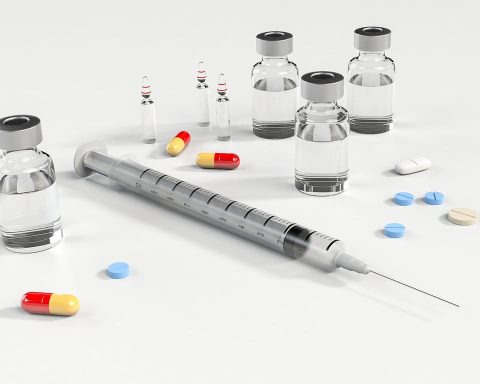In recent years, biotech, pharmaceutical and healthcare executives have been dealing with a global crisis created by the prevalence of multi-drug resistant organisms (MDROs), or as they have come to be referred to more commonly, superbugs. The Centers for Disease Control and Prevention (CDC) estimates that antibiotic-resistant infections are responsible for two million illnesses and 23,000 deaths annually in the U.S. alone. These infections are not only widespread, they can be costly and challenging as many healthcare facilities lack access to reliable diagnostic tools. The resulting misdiagnoses and misuse of antibiotic treatments can end up totaling more than $20 billion annually.
Yet, according to a recent WHO report, it appears as if the world’s superbug issue is only in its infancy. While time and resources are being funneled into antibiotic education and stewardship programs around the world, surveillance on how we identify and treat these diseases, particularly in underdeveloped nations is still a major challenge. The daunting task of tracking laboratory and hospital data to identify trends in drug resistance, treatment regimens and patient outcomes is proving to be difficult, even for the most developed countries. However, new solutions in biotechnology and precision medicine are emerging to address this challenge on a global level.
Biotechnology solutions change how we approach MRDO treatments
Although significant efforts are being made to increase global education on infectious disease prevention, including antibiotic stewardship, these solutions can only go so far and the pipeline for new antibiotic drugs to effectively combat MDROs contracted by patients has become severely limited. In the fight against superbugs, more scientists and researchers are turning toward rapid-detection platforms to address the deficit of new therapeutics and treatments and protect the efficacy of existing antibiotics, many of which are becoming ineffective against these infections due to overuse.
Deploying rapid molecular technologies early on in the MRDO testing process has tremendous potential, which goes beyond reliably detecting bacterial infections. These technologies can guide healthcare professionals in their quest to make patient management decisions earlier in their treatment process, expand existing infection control programs and use antibiotics more effectively, a practice that will save hospitals money while also improving patient outcomes, often in a shorter period of time.
Rapid diagnostics & bioinformatics in action
In significantly less time than existing diagnostic tests, a combined rapid diagnostic and bioinformatic platform is capable of detecting and identifying multi-drug resistant pathogens, locating antibiotic-resistant threats throughout multiple healthcare institutions and networks and precisely guiding first-line antibiotic therapy. When these platforms are introduced in a network of healthcare institutions, it becomes possible to create an antibiotic resistance database containing valuable, actionable and real-time data. When treating a patient whose diagnostics indicate the presence of an MRDO, professionals at these participating institutions can tap into the database to predict the infection’s resistance to specific antibiotics and determine if the individual antibiotic-resistant pathogen is related to other pathogens that have been previously detected and entered into the health system.
A healthcare network that has deployed this platform has the ability to better protect patients from the growing superbug problem by predicting possible unwanted outcomes before they can occur and safeguard the antibiotic supply by using data to guide medical professionals toward more effective treatment options in a shorter period of time. This rapid solution harnesses the power of genomics and bioinformatics to combat antibiotic resistance both proactively and comprehensively.
New York State takes action
In the United States, one state has taken a proactive approach to detect, track and manage these dangerous antimicrobial-resistant infections in healthcare institutions. Governor Cuomo of New York announced a groundbreaking initiative that produces a digital health and precision medicine platform which connects statewide healthcare institutions to the New York Department of Health. This ambitious initiative will use genomic microbiology to create a network of statewide surveillance and control of antimicrobial resistance.
The New York State program is expected to drastically improve patient outcomes while simultaneously reducing healthcare costs through the integration of real-time epidemiologic surveillance and the use of mobile devices and web-based platforms to deliver results, insights and treatment plans to caregivers faster than ever before. Following the demonstration period and statewide rollout of this project, other U.S. states can be expected to follow suit and pick up on this model as a blueprint for fighting antimicrobial-resistant infections.
Looking Ahead
We are entering a new era of precision medicine where clinics, hospitals and doctors themselves take action to reduce patient suffering and upend the traditional, time-consuming and expensive diagnostic model. As these programs take off in the U.S., we can expect to see innovative organizations at the forefront of biotechnology and genomics work with the CDC to find new ways to develop and introduce clinical support tools for antimicrobial stewardship and infection control to low and middle-income countries as well.
In densely-populated regions where infections can be even harder to diagnose and treat, including South America, these tools are a crucial first step toward raising awareness against the dangers of antimicrobial-resistance and antibiotic misuse. We are already seeing these initiatives inspire biotechnology companies to introduce precision medicine and rapid diagnostics in lower- and middle-income countries, with the goal of going beyond awareness and stewardship to create surveillance networks and comprehensive treatment plans on a global scale.
About Author
Evan Jones is the CEO of OpGen, Inc., a pioneering informatics and genomic analysis company providing complete solutions for patient, hospital, and network-wide infection prevention and treatment.








